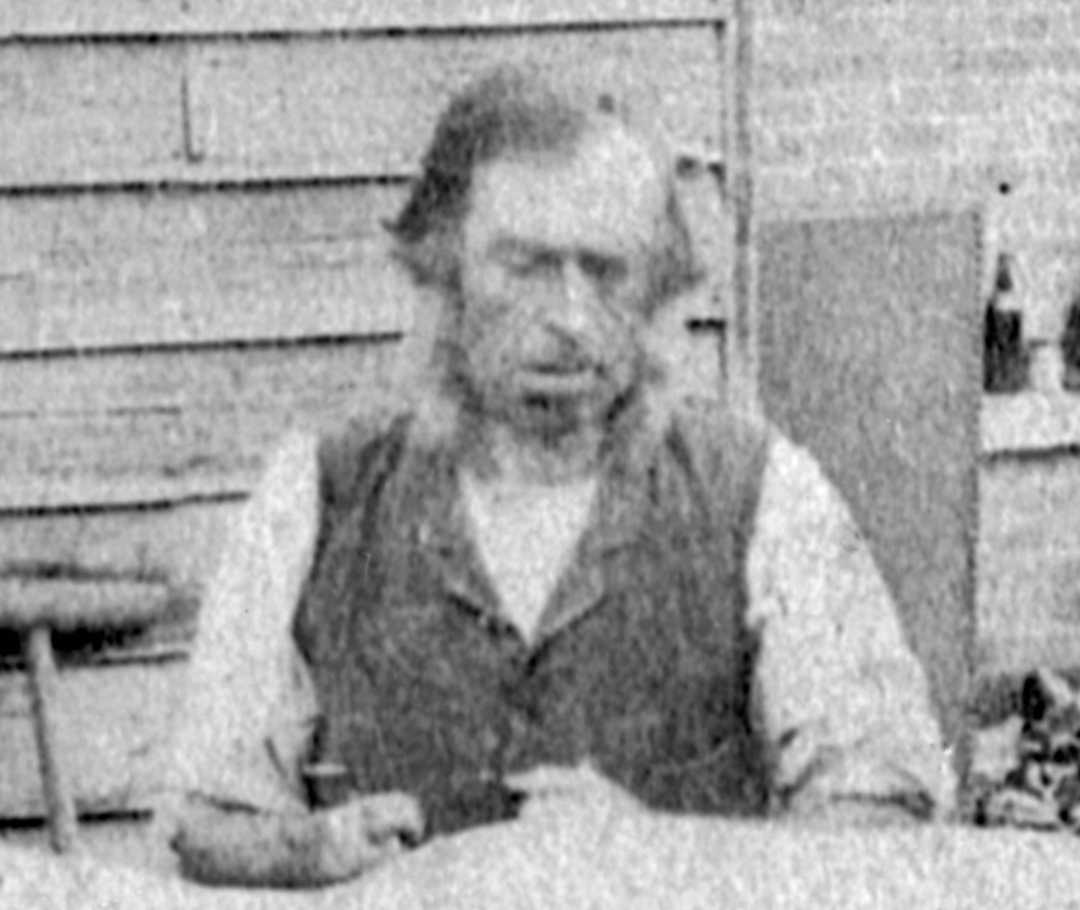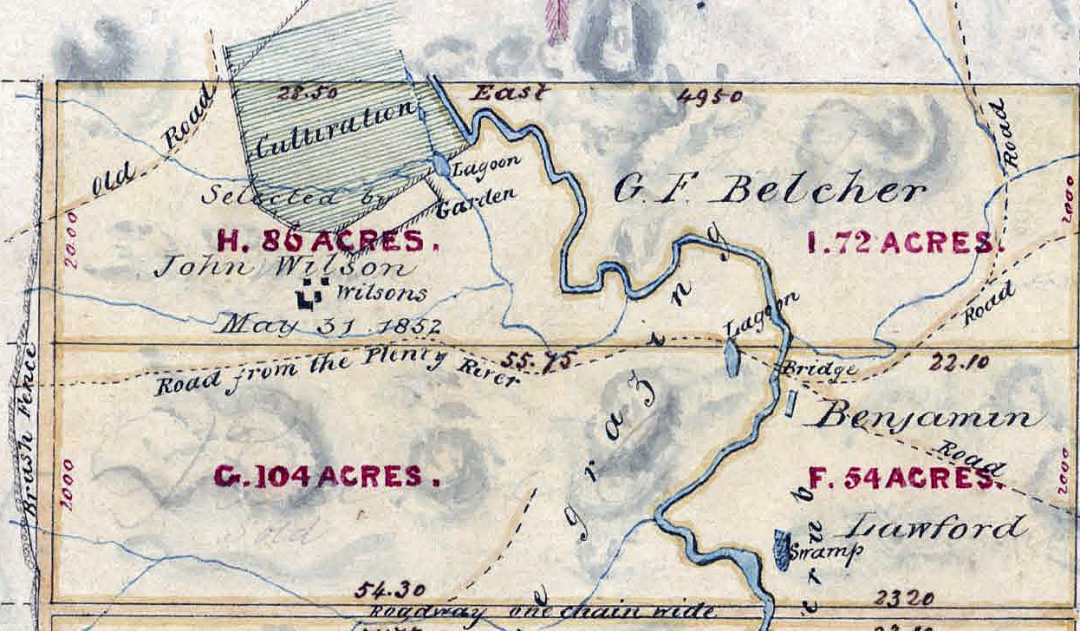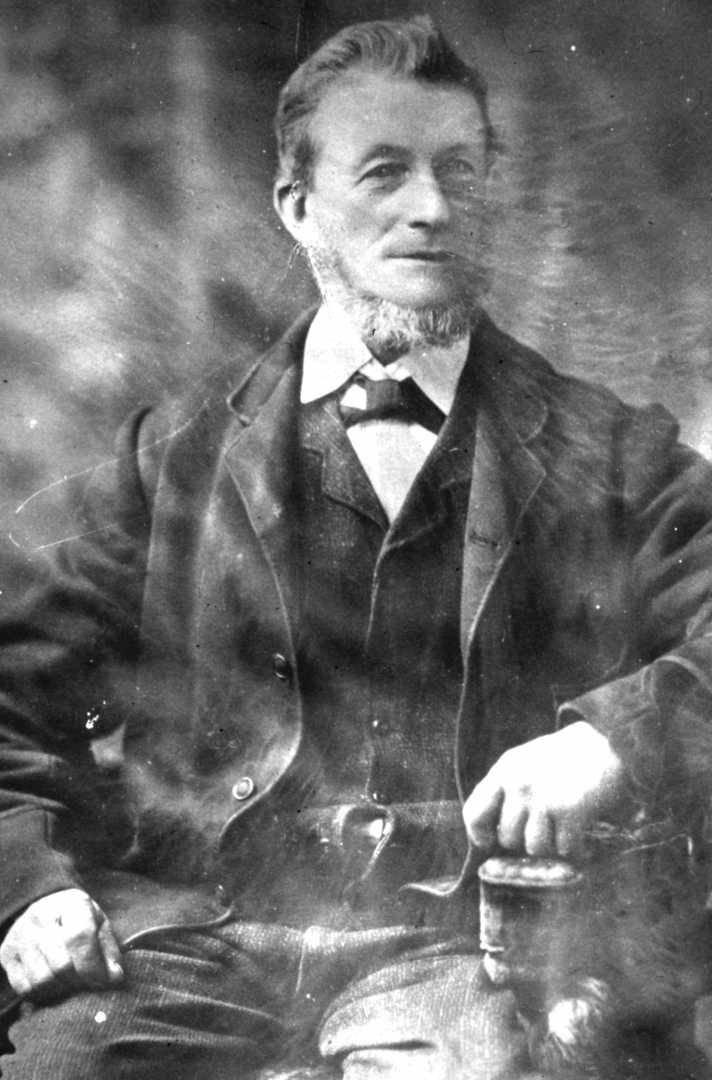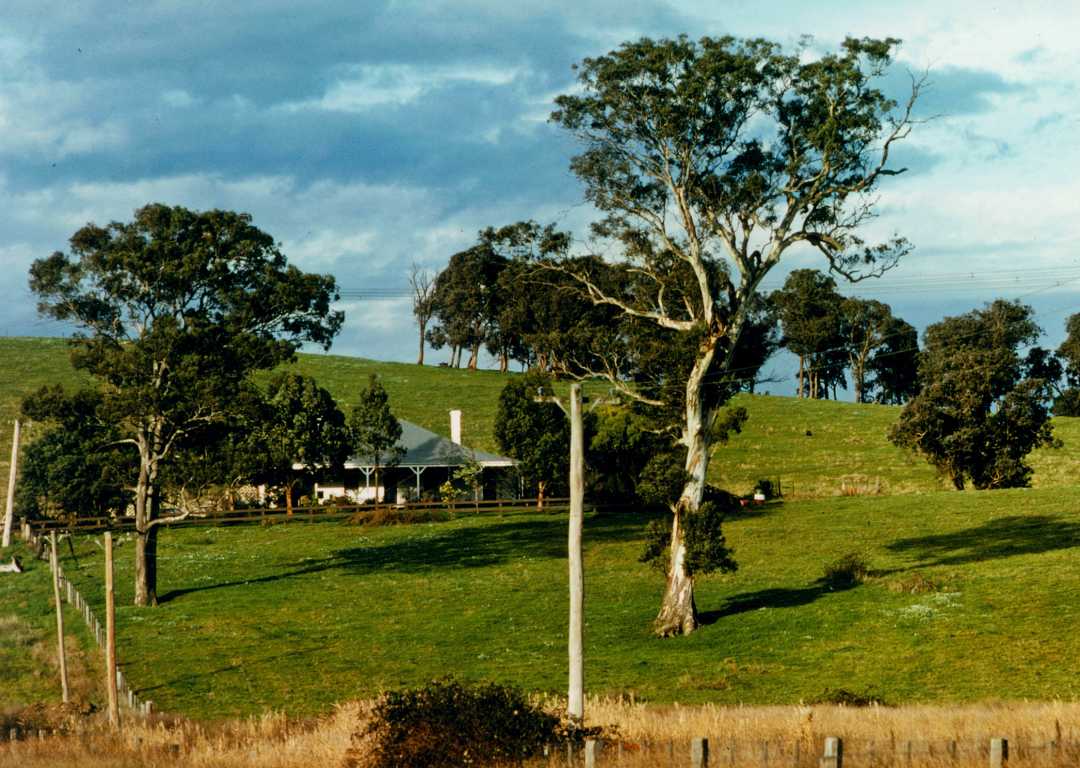John Wilson and his wife Martha Burgess arrived in Port Phillip as bounty immigrants on the 18th February 1844 with their seven children ranging in age from 1 to 17. They left their home in Langley, Essex looking for better opportunities as so many others at the time did.
Bounty immigrants were expected to begin working to contribute to the new settlement’s prosperity so having five younger children was seen as a burden by the local authorities. However, John appears to have been an enterprising man, and having had a number of different jobs in the past, set off with his family to find work. He soon opened a butchering business in what was then Stephen Street, now Exhibition Street and in that same year is recorded as holding a small pastoral lease “on the Plenty” (probably at Nillumbik), and was grazing cattle, sheep and pigs as a source of supply for his business.

John and his eldest son William who was 17 in 1844, were listed in the Port Phillip Almanac and Directory of 1846-1847 as residents of Nillumbik, and while continuing to operate the shop in Stephen Street, they established a carrying business between Melbourne and Nillumbik. They occupied their first parcel of land at Nillumbik until 1847, when they sold the lease. With a team of bullocks, John and William ran a carrying business between Melbourne and pastoral stations in the valley of the Diamond Creek.
With his two older sons William and John, he built a three-roomed wattle and daub home above the Nillumbik Lagoon, approximately fifty metres east of the present bridge over the Diamond Creek. The Wilson’s cleared the land and planted an orchard and crops, and grazed cattle, sheep and pigs for their shop in Stephen Street. The home was approximately where the bowling club now stands above the sports oval. The land adjoined a track that in time became a main route from Melbourne to the Diamond Valley, Kangaroo Ground, Christmas Hills and places further east. They built a long causeway at the creek which was close to the present main road crossing of the bridges.
They built a large barn near their house, and until the opening of St. Johns Church at Diamond Creek in 1879 the barn was used for church services. In the vicinity of the barn they built an inn that was known as “Sailors Home”.
Many a sailor deserting his ship would find shelter there until his ship had departed, and he would then receive assistance in finding employment.

John was able to purchase the 86 acres he had leased on 13 October 1854 and later also the adjoining 104 acres that was originally part of Henry Arthur’s Nillumbik Farm. The combined holding included the flats and hills south of a line that, in time, became Challenger Street and extended toward Allandale Road. In the 1852 “Return of Stock” John Wilson was listed as having 350 head of cattle and 360 sheep on this property. His holding covered the flats and hills south of a line that, in time, became Challenger Street and extended toward Allendale Road. The property was occupied by Wilson descendants for many years until recent times.
The farm was well known in the wider area, and the locality was known as “Wilsons” or “Wilsons Crossing” for many years before a township was established and named Diamond Creek.

In 1851, John Wilson took over the lease of Woodlands Station on the Diamond Creek. The homestead on this property was about half way between Diamond Creek and Wattle Glen. In June 1853 he acquired the lease to Christmas Hills Station and renamed it One Tree Hill Station. Mainly steep hilly timbered country with the sole good land along creek flats and on a tributary of Watson’s Creek it encompassed the entire northern portion of the area later known as Christmas Hills, up to the ridge separating the valleys of the Diamond Creek and Watson’s Creek, and extending eastward to the Yarra Flats at the foot of the escarpment. It was run by his second son John and by 1855 the station had ten horses, thirteen head of cattle and 1400 sheep. In his six years at One Tree Hill John met Christina McPherson, the daughter of his neighbour. They moved to Yarra Flats now Yarra Glen soon after their marriage in 1857. His younger brother James then took over the property employing their youngest brother David.
During the 1850’s three other children married into other families across the district: older daughter Elizabeth to William Wandless Herbert, Martha to Robert Godber and William to Rosamond Godber. In 1864 John’s wife Martha became ill and died. As there was no cemetery at the time, she was buried on the Wilson property near the homestead close to Ryan’s Road. When Nillumbik Cemetery was established in 1867, Martha was reinterred there. In the later 1860’s their other children married except for James who remained single throughout his life: Joseph to Sarah Whatmough and David to Elizabeth Anne McPherson.
The first discovery of gold at Diamond Creek was in 1862 by Joseph and David Wilson on the boundary of land owned by Charles Orme and Dr. Phipps. The discovery led to the establishment of the Diamond Creek Gold Mine built and financed by Dr. Phipps. Despite Joseph and David’s fortunate find, the Wilson family do not appear to have been attracted to being directly involved in mining, but as pastoralists, they took advantage of the windfall markets which developed at their doors.
In 1866 it was decided to have a plan prepared for the subdivision of the land to form a township, which was to be named Nillumbik. However, this name was not accepted by the community, so the township subdivision was named Diamond Creek. When the township was declared, existing temporary arrangements under which land had been occupied were extinguished, and the land included in the subdivisional plan was sold as freehold allotments. At a sale held at Scott’s Hotel in Collins Street, Melbourne, on 22 November 1867, although he was then aged 69, John Wilson bought two blocks in Chute Street and William a third and larger block.
In 1860, Nillumbik came under the jurisdiction of the Anglican Parish of Eltham, and lacking a church, services were held in the Wilson’s barn until a church was built. In 1871 the building of a Methodist Church was proposed on land donated by William Wilson on the corner of Diamond and Chute Streets. William followed the Primitive Methodist faith of his mother Martha and her Burgess family from Furneux Pelham in Hertfordshire, as did others in the district. Primitive Methodist services were held in the barn on the property of Patrick Cummings from 1851. It was located approximately on the corner of present-day Phipps Crescent and Main Hurstbridge Road. In 1862 a second building was erected to house the church and a schoolroom to meet the increasing demand from families moving to the area after the discovery of gold. The school opened in December 1864 taking in pupils from as far to the north as Allwood (now Hurstbridge) and to the south of the township. Records show there were approximately 60 pupils in the first year of opening including William’s children, nieces and nephews. It was replaced by Nillumbik (Diamond Creek) State School when the State Government started the state school system in 1870. The first post office opened there in the same year and was run by the school master. William Wilson also held the post office licence for a time.
The Wilson family became quite a large clan with each of those children who married having between eight and ten children who then had large families too. Each generation either stayed in the district or moved across Victoria and interstate marrying into the local community. There are many descendants in the district today, either those who stayed or have been drawn back after their grandparents had moved to distant areas. As with many of our pioneer families, they say you have to be careful who you talk about unless you know a local’s history or you might even meet a cousin you didn’t know about!
Sources: Nillumbik Historical Society Archives; Jean Verso family history; “A Wilson Family History” Constance and Keith Moody




I read with interest the above article. Although I knew some of it other details were new to me. I am a Wilson descendant being the great great granddaughter of Joseph Wilson and Sarah(Whatmough), the great granddaughter of John Wilson and Sarah (Harrington) and the granddaughter of Herbert Leslie Wilson and his wife Ethel (Rose). All of these people are buried in the cemetery. My mother was Edna Wilson (Grosser) and her sister Lorna Wilson ( Upton) who remained in the area all her life. I notice that the above words were taken from a Wilson family history and wonder if it is possible to get a copy of it. I am very interested in Ancestry and in particular mine! I did also read that Joseph and Sarah Wilson are in unmarked graves. Is this the case and if so I think some of us would be interested in correcting that.
To Nerelle Roy: Hi, my name is John Gibson and a descendant of John Wilson and Martha Burgess. Via William Wilson then Job Wilson/ then Eva Annie Wilson. Eva is my grandmother.
I do have a copy of the book you are after and could photo copy it for you.
My email : gibsonj685@gmail.com, and phone is 0414 143 672
please feel free to contact me, Regards John
Hello
I was very interested in this article as I am a descendant of John Wilson.
My Name is Robert Wilson. DOB 29/04/1941. My parents were Leslie Anzac and Dorothy May Wilson
My father originally operated a general carrying business before opening the Garage/Service station in Greensborough Rd.known as Wilson’s Midway Motors being midway between Greensborough and Diamond Creek.
I eventually took over the business and ran it before moving to Queensland in 1983.
I have tried to do a family tree which is a challenge considering the large families back then.
Another point of interest is that My fathers sister Else Irene, Married a Claude Wilson who is also a descendant on the William branch of the tree.
The only ones to carry on the name are my 2 grandsons Jake and Lachlan, sons of my son Hayden Lewis.
Hello Robert, It’s great to hear from you and that you are keeping the Wilson name going. I remember the service station and have also seen some of the photos you put on facebook a while ago. I am also a Wilson, through Elizabeth the older daughter who originally came to Australia – she married William Wandless Herbert and their daughter was my great grandmother. I have a lot of family history for the Wilson family and can help with some information that may help you get going. If you send an email to me at the historical society – elliscottage@gmail.com – I can send you some information. all the best Jean Verso.
Hello History lovers,
Thank you for your passion and commitment to this work.
Council thought you may have access to rates records going back to 1940’s-1960’s.
My maternal grandfather, Harry Carter, whom i never met, owned a property in Kangaroo Ground during that time and i’d hoped to find the address.
Any leads wld be so appreciated.
Kind regards,
Janie Bailey
Hello Janie, thank you for asking, but we don’t have any rate records in our collection. You may have some luck with the Andrew Ross Museum in Kangaroo Ground (www.andrewrossmuseum.org.au) or Eltham District Historical Society (elthamhistory.wordpress.com) who have old Eltham Shire records in their collection.
Hi I have just found out that my great great grandmother Mary Ledgerwood is buried in the diamond creek cemetery, her maiden name was Dobson, her father was John Dobson and there is no mother on the birth certificate ,there are story’s that say her mother was aboriginal , I wonder if there is any other history about them ,Mary was born in Tasmania , I am her great great grandaughter
Hello Lynette, we can possibly help if you provide some more information and what you would like to know.